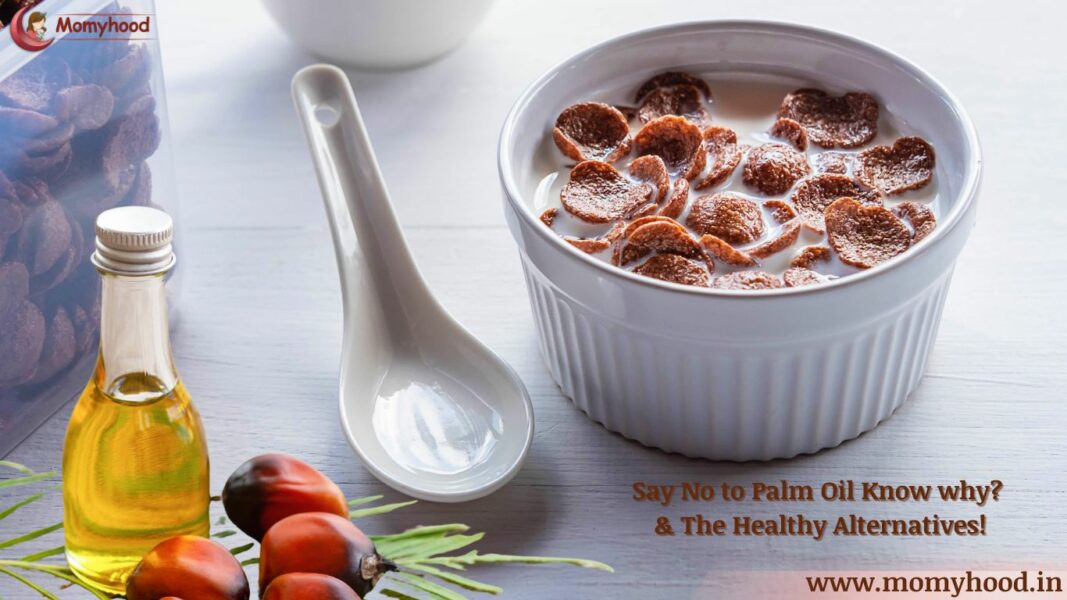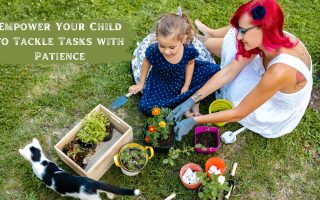As parents, we always want to give our kids the healthiest and most nutritious food. But what if I told you that palm oil in kids’ food is more common than you think? From breakfast cereals to pancake mixes, bread, and even snacks, palm oil is everywhere. Unfortunately, it’s not the healthiest option for our children, and while avoiding it entirely might be difficult, there are ways to make smarter choices.
In this blog, I’ll share my journey of switching to healthier alternatives, the challenges I faced, and how you too can start making better food choices for your kids.
Why Palm Oil is Harmful to Health
Palm oil is a vegetable oil that’s cheap and widely used in processed foods. It’s found in so many of the products we consume daily because it’s affordable and easy to work with for manufacturers. But here’s the catch: palm oil is highly processed and has been linked to several health risks when consumed regularly. Studies show that consuming too much palm oil can lead to higher cholesterol levels, heart disease, and other chronic health problems. It’s even worse if Palm Oil in Kids’ Food is found since their growing bodies need clean, nutritious fuel. Check out this article for more information.
Understanding the Risks of Palm Oil in Kids’ Food
As I started researching the impact of palm oil in kids’ food, I was alarmed to learn that this ingredient is often present in products marketed as healthy. Many parents assume that if a product is labeled as “for kids,” it must be nutritious. However, that’s not always the case. For example, I found that some granola bars designed for children contained palm oil in kids’ food, masking it under vague terms like “vegetable oil.” This was a wake-up call for me, highlighting the importance of being vigilant about what we give our little ones.
Palm Oil in Kids’ Food & it’s Everywhere!
It’s shocking how many common food items contain palm oil in kids’ food, especially those we often offer to our children without a second thought. Here are just a few examples:
- Bread: The majority of store-bought bread has palm oil listed as one of the ingredients. Even the healthy-looking multigrain breads often have it.
- Pancake Mixes: Many ready-made pancake mixes contain vegetable oil as a stabilizer.
- Breakfast Cereals: Popular cereals and snacks, like chocolate flakes and chocos, often use palm oil to enhance texture and shelf life.
I realized that palm oil was sneaking into my home in so many forms, and I knew I had to make a change. But like many parents, I felt overwhelmed at first. The thought of finding alternatives for everything seemed impossible.
My Journey: Switching to Healthier Alternatives
When I first discovered that the chocos I was giving to my son, Hitarth, contained palm oil, I knew it was time for a change. I spent time researching healthier alternatives, and finally, I found a brand like Slurrp Farm that didn’t include palm oil in their cereal. I made the switch immediately, and it was a relief knowing that I was offering something healthier without compromising on taste.
📣 Loved what you read? Want to go deeper into conscious parenting? ✨ The Power of Manifestation in Parenting is now available — A soulful guide packed with real-life tools like affirmations, energy shifts, and sleep talk that I personally use with my son, Hitarth. 💛 Start your journey toward calmer, connected parenting today. 🎉 Launch Offer: Only ₹99 (limited-time price!) 📲 Instant download. No waiting. 👉 Grab your copy now!.
The same happened with bread. After reading labels and going through countless options, I eventually found a brand that was free from palm oil. It wasn’t easy, but it felt worth it.
Here’s a small but powerful step you can take: start reading labels. It may sound simple, but many parents skip this crucial part because we assume that products marketed for kids are always safe and healthy. The truth is, ingredients like palm oil, maida (refined flour), and unhealthy preservatives are often hidden in plain sight.
How to Make Smarter Food Choices for Your Kids
While we can’t always avoid unhealthy ingredients like palm oil, we can certainly make better choices by being more mindful. Here’s what worked for me:
Read Labels Carefully
The first step is always to check the ingredient list when selecting food for your kids. Look for items that clearly mention no palm oil, and avoid anything with “vegetable oil” or “palm oil” on the label. While palm oil in kids’ food is used in many processed items, it’s best to minimize its consumption, especially for children, as it is high in saturated fats, which may not be the healthiest choice for growing kids. Some products try to hide palm oil under names like “Palmolein” or “Palm Stearine,” so be aware of those terms.
Opt for Whole Foods
Where possible, choose whole foods. For example, instead of buying processed bread, consider making your own at home with simple ingredients like whole wheat flour. When you have more control over what goes into your food, you can avoid unhealthy oils and additives. Also read: Dried Cranberries for Kids: Why You Should Add This Nutritious Fruit to Their Diet Today
Choose Better Brands
Brands like Slurrp Farm are making it easier for parents to make healthier choices by offering products free from palm oil, maida, and other harmful ingredients. For example, their chocos, pancake mixes, and other products are great alternatives to the typical processed versions. Keep an eye out for brands that prioritize healthy ingredients for children.
Avoid Refined Flours
Just like palm oil, maida is another unhealthy ingredient that sneaks into many kids’ foods. White, refined flours have very little nutritional value, and overconsumption can lead to digestive problems and weight issues. Instead, look for products made with whole wheat or other nutritious flours.
Start with Small Changes
Making every meal palm oil-free might feel like a lot of pressure, but you don’t have to change everything overnight. Start with one or two products, like cereal or bread, and gradually move toward healthier alternatives. Over time, these small shifts can have a big impact.
Encouraging Healthier Eating Habits in Your Family
As parents, we can set a positive example for our kids. When they see us making conscious decisions about the food we eat, including avoiding palm oil in kids’ food, they’ll be more inclined to develop healthy habits themselves. Encourage your kids to try new foods and explain why you’re choosing one product over another.
For example, when I switched Hitarth’s cereal, I explained to him why I chose Slurrp Farm over the other brands. It became a teaching moment about making healthy choices, even at a young age.
The Reality: You Can’t Avoid Everything, and That’s Okay
I understand that we can’t avoid every unhealthy ingredient, and it’s unrealistic to expect that we’ll never consume palm oil or refined flour. But by being more mindful and making better choices where we can, we’re taking steps towards a healthier lifestyle for ourselves and our children.
Remember, the goal isn’t to be perfect—it’s to make progress. Every time you swap out a palm oil-laden product for a healthier alternative, you’re doing something great for your family.
Making Informed Choices about Palm Oil in Kids’ Food
In my journey towards healthier eating, I realized that addressing palm oil in kids’ food is just the beginning. When I saw how prevalent this ingredient is, I started paying attention not just to labels but also to the brands I support. By opting for products that clearly state they are free from palm oil in kids’ food, I’m not just safeguarding my son’s health but also encouraging manufacturers to produce better options. It’s empowering to know that as parents, we can influence the market simply by making informed choices about the foods we bring into our homes.
Conclusion: Make the Switch Today
Now that you know more about the hidden dangers of palm oil in kids’ food, you can start making healthier choices for your family. It’s not about avoiding every single product that contains palm oil, but rather making smarter decisions. Start by reading labels, trying out healthier brands, and gradually making the switch to better options.
By making small changes, you’re not only protecting your child’s health but also creating a healthier environment for your entire family.
Your comments and shares do more than just support our blog—they uplift the amazing moms who share their stories here. Please scroll down to the end of the page to leave your thoughts, and use the buttons just below this line to share. Your support makes a big difference!



